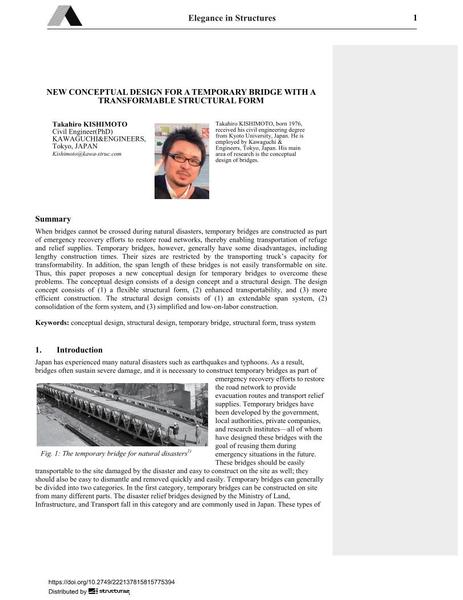New Conceptual Design For A Temporary Bridge With A Transformable Structural Form

|
|
|||||||||||
Détails bibliographiques
| Auteur(s): |
Takahiro Kishimoto
|
||||
|---|---|---|---|---|---|
| Médium: | papier de conférence | ||||
| Langue(s): | anglais | ||||
| Conférence: | IABSE Conference: Elegance in structures, Nara, Japan, 13-15 May 2015 | ||||
| Publié dans: | IABSE Conference Nara 2015 | ||||
|
|||||
| Page(s): | 354-355 | ||||
| Nombre total de pages (du PDF): | 5 | ||||
| Année: | 2015 | ||||
| DOI: | 10.2749/222137815815775394 | ||||
| Abstrait: |
When bridges cannot be crossed during natural disasters, temporary bridges are constructed as part of emergency recovery efforts to restore road networks, thereby enabling transportation of refuge and relief supplies. Temporary bridges, however, generally have some disadvantages, including lengthy construction times. Their sizes are restricted by the transporting truck's capacity for transformability. In addition, the span length of these bridges is not easily transformable on site. Thus, this paper proposes a new conceptual design for temporary bridges to overcome these problems. The conceptual design consists of a design concept and a structural design. The design concept consists of (1) a flexible structural form, (2) enhanced transportability, and (3) more efficient construction. The structural design consists of (1) an extendable span system, (2) consolidation of the form system, and (3) simplified and low-on-labor construction. |
||||
